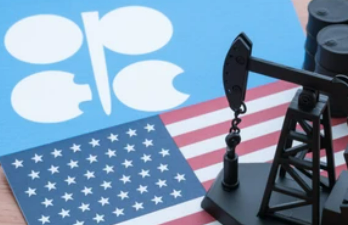
Aria Thomas
May 16, 2022 10:10

Gold lost more than 1 percent on Friday and is poised for its fourth consecutive weekly decline, as the dollar's strong run and the prospect of more aggressive U.S. interest rates drained bullion demand.
At 1:54 p.m. EDT (1754 GMT), spot gold declined 0.7% to $1,808.89 per ounce, after hitting its lowest level since February 4 at $1,778.6 per ounce. This week, it has decreased roughly 4 percent.
U.S. gold futures finished at $1,808.20, down 0.9%.
Thursday, U.S. Federal Reserve Chair Jerome Powell stated that the struggle to contain inflation would "involve some pain" as a result of the impact of rising interest rates.
David Meger, director of metals trading at High Ridge Futures, stated, "Gold is being pulled down as a result of the Federal Reserve's commitment to hike interest rates at a rapid pace and the dollar's exceptional strength."
The market will pay close attention to inflation figures in the future.
The dollar index was poised for its sixth straight weekly increase, hovering close to a 20-year high.
Although bullion is viewed as a hedge against inflation, it pays no interest and is subject to rising U.S. short-term interest rates and bond yields.
"A resurgence in global stock markets coupled with decreased risk aversion in the market to conclude the trading week is also negative for safe-haven metals," Kitco senior analyst Jim Wycoff wrote in a note.
Wall Street's major indexes were driven higher by growth stocks. [.N] [MKTS/GLOB]
The spot price of silver increased by 1.6% to $20.98 per ounce, but has declined by around 6% this week, the most since late January.
Platinum decreased by 0.8% to $936.51. Palladium rose 1.5% to $1,936.83 on Friday, after dropping almost 8% on Thursday.
Meger added, "Overwhelming concerns about supply disruptions in Russia take precedence on the palladium market, and there is aggressive purchasing on dips since prices have fallen considerably."

May 13, 2022 09:57

May 16, 2022 10:14